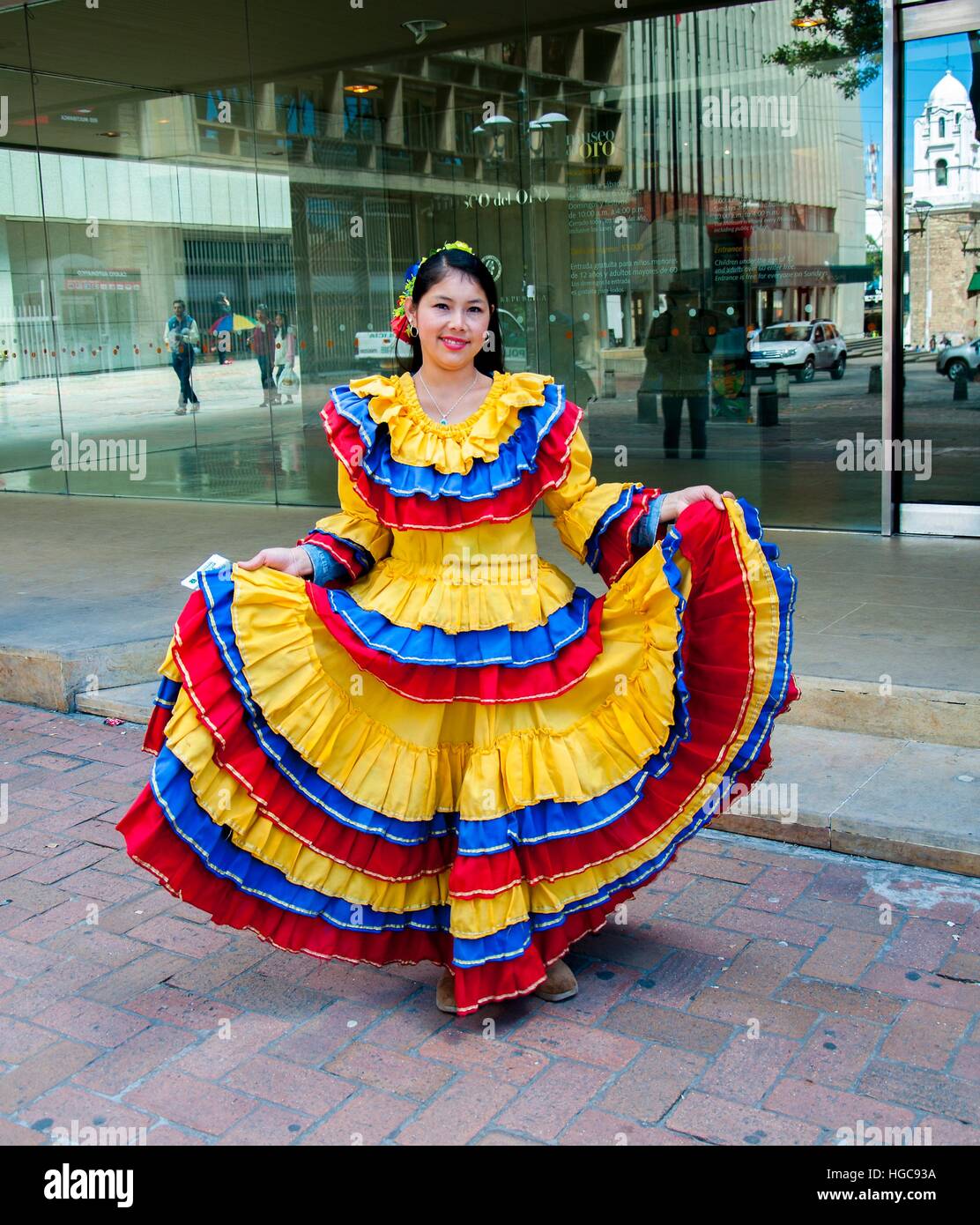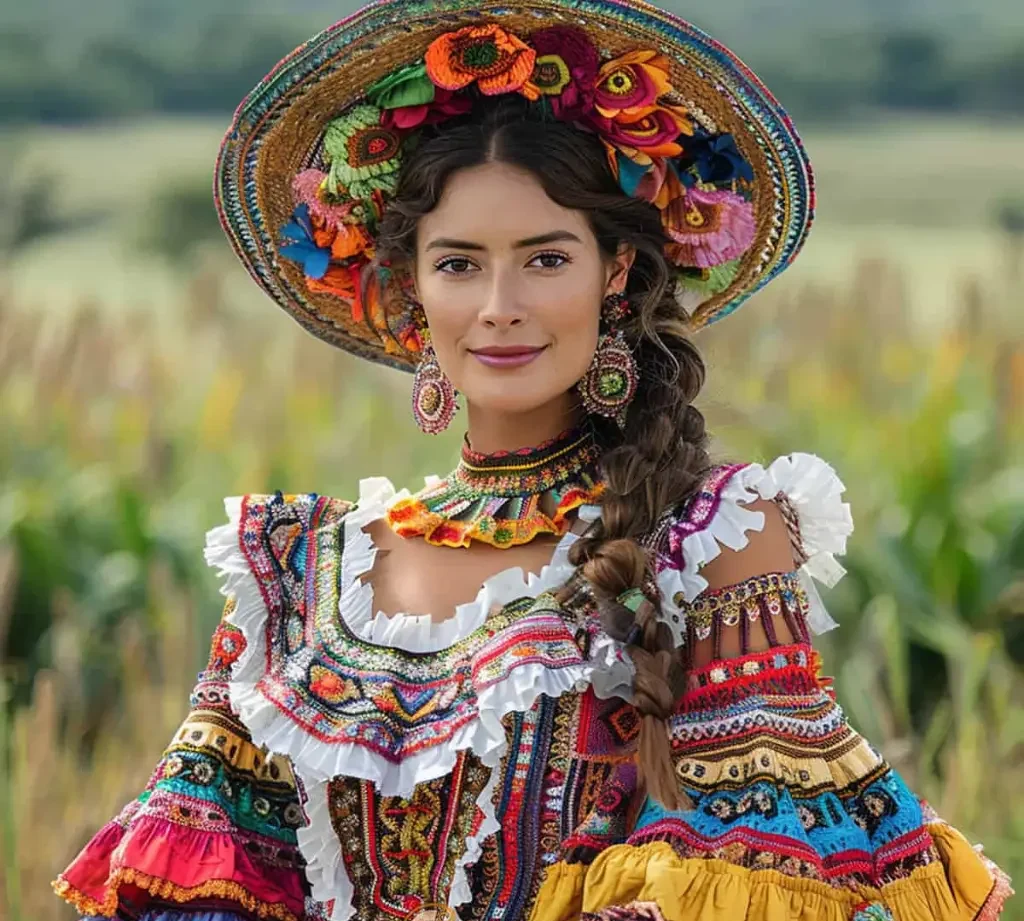Colombian fashion represents a unique blend of indigenous roots, Spanish colonial influences, and contemporary trends. This dynamic fusion creates a style that is both deeply rooted in tradition and forward-thinking. As one of Latin America's most vibrant fashion scenes, Colombia continues to inspire global designers and enthusiasts alike.
From the colorful costumes of the Wayuu people to the sophisticated designs showcased at Bogotá Fashion Week, Colombian fashion tells a story of cultural diversity and creativity. The industry has evolved significantly over the years, blending artisanal craftsmanship with modern techniques to produce stunning pieces that resonate globally.
This article will explore the fascinating world of Colombian fashion, delving into its historical roots, key figures, current trends, and future prospects. Whether you're a fashion enthusiast, a designer, or simply curious about this vibrant culture, this guide will provide valuable insights into what makes Colombian fashion so special.
Read also:Mastering The Art Of Waves A Comprehensive Guide To Transforming Straight Hair
Table of Contents
- The Rich History of Colombian Fashion
- Key Figures in Colombian Fashion
- Traditional Materials and Techniques
- Colombian Fashion Events
- Current Trends in Colombian Fashion
- Global Influence of Colombian Fashion
- Sustainability in Colombian Fashion
- Notable Colombian Fashion Brands
- The Future of Colombian Fashion
- Conclusion
The Rich History of Colombian Fashion
Colombian fashion has deep historical roots that date back to pre-Columbian times. Indigenous tribes, such as the Muisca and Wayuu, crafted intricate textiles and garments using natural fibers like cotton and agave. These early designs were not only functional but also carried significant cultural and spiritual meaning.
With the arrival of Spanish colonizers in the 16th century, new materials and techniques were introduced, influencing local craftsmanship. The Spanish brought wool, silk, and embroidery techniques, which were eventually incorporated into traditional Colombian garments. This period marked the beginning of a rich cultural exchange that continues to shape Colombian fashion today.
Over the centuries, Colombian fashion evolved to reflect the country's diverse cultural landscape. Each region developed its own unique styles, from the vibrant costumes of the Caribbean coast to the elegant ponchos of the Andean highlands.
Indigenous Influences in Colombian Fashion
Indigenous communities play a crucial role in preserving traditional Colombian fashion. Their use of bold colors, geometric patterns, and natural dyes continues to inspire modern designers. The Wayuu tribe, for example, is renowned for its exquisite mochilas (handwoven bags) and colorful textiles, which have gained international recognition.
Key Figures in Colombian Fashion
Colombian fashion owes much of its success to visionary designers who have pushed boundaries and brought global attention to the industry. These pioneers have not only elevated Colombian fashion but also preserved its cultural heritage.
Biography of Key Figures
| Name | Born | Occupation | Notable Achievements |
|---|---|---|---|
| Juan Carlos Obando | 1963 | Designer | Founded Juan Carlos Obando brand, showcased at London Fashion Week |
| Paola Angelini | 1972 | Designer | Known for sustainable fashion, won L'Oréal Award for Young Talent |
| Oscar de la Renta | 1932 | Designer | Colombian heritage, influential in global fashion |
Traditional Materials and Techniques
Colombian fashion is renowned for its use of traditional materials and techniques. These elements are integral to preserving the country's cultural identity while adapting to modern demands.
Read also:The Ultimate Guide To The Kardashian Names Exploring The Familys Legacy And Influence
Some of the most commonly used materials include:
- Cotton: Widely used for its durability and versatility
- Silk: Imported during colonial times, now locally produced
- Wool: Used for traditional ponchos and blankets
Techniques such as hand weaving, embroidery, and batik printing are still practiced by artisans across the country, ensuring that traditional methods are passed down through generations.
Modern Adaptations of Traditional Techniques
Contemporary designers are increasingly incorporating traditional techniques into their collections. This fusion of old and new not only preserves cultural heritage but also appeals to global audiences seeking authentic, handcrafted pieces.
Colombian Fashion Events
Fashion events play a vital role in showcasing Colombian talent and promoting the industry globally. Among the most prominent events is Bogotá Fashion Week, which attracts designers, buyers, and media from around the world.
Other notable events include:
- Medellín Fashion Week
- Cartagena Fashion Festival
- Calí Fashion Show
These platforms provide opportunities for emerging designers to gain exposure and connect with international markets.
Current Trends in Colombian Fashion
Colombian fashion is currently experiencing a surge in popularity, driven by innovative designs and sustainable practices. Key trends include:
- Vibrant colors and bold patterns inspired by nature
- Ethnic motifs and traditional textiles
- Sustainable materials and ethical production
Designers are increasingly focusing on creating collections that reflect Colombia's rich cultural diversity while meeting global demands for ethical fashion.
Street Style in Colombia
Street style in Colombia reflects the country's youthful energy and creativity. From the bustling streets of Bogotá to the colorful neighborhoods of Cartagena, fashion enthusiasts can find inspiration in everyday attire that blends tradition with modern flair.
Global Influence of Colombian Fashion
Colombian fashion has made significant strides on the global stage, thanks to talented designers and a commitment to quality craftsmanship. International collaborations and partnerships have further enhanced Colombia's reputation as a hub for innovative fashion.
Key factors contributing to this global influence include:
- Participation in international fashion weeks
- Export of traditional textiles and accessories
- Collaborations with global brands
As Colombian designers continue to gain recognition, the industry is poised for even greater success in the coming years.
Sustainability in Colombian Fashion
Sustainability has become a core focus for many Colombian fashion brands, reflecting a growing awareness of environmental and social responsibilities. Designers are increasingly adopting eco-friendly practices, such as using recycled materials and reducing waste.
Some of the initiatives include:
- Use of organic cotton and other sustainable materials
- Implementation of fair trade practices
- Development of circular fashion models
These efforts not only benefit the environment but also enhance the ethical appeal of Colombian fashion products.
Notable Colombian Fashion Brands
Several Colombian brands have gained international recognition for their unique designs and commitment to quality. These brands represent the best of Colombian fashion and continue to inspire both locally and globally.
Some of the most notable brands include:
- Juan Carlos Obando
- Paola Angelini
- Wanda Nylander
Each of these brands offers a distinct perspective on Colombian fashion, showcasing the diversity and creativity of the industry.
The Future of Colombian Fashion
The future of Colombian fashion looks promising, with continued growth expected in both domestic and international markets. Advancements in technology, increased focus on sustainability, and a new generation of designers are driving innovation and expanding opportunities.
Key areas of growth include:
- Expansion into digital platforms
- Increased emphasis on ethical production
- Development of new materials and techniques
As Colombia continues to assert its presence on the global fashion scene, the industry will undoubtedly play a pivotal role in shaping the future of fashion worldwide.
Conclusion
Colombian fashion represents a vibrant tapestry of tradition and modernity, reflecting the country's rich cultural heritage and creative spirit. From its historical roots to current trends, Colombian fashion continues to inspire and influence both locally and globally.
As the industry evolves, it is essential to preserve traditional techniques while embracing innovation and sustainability. By doing so, Colombian fashion can maintain its unique identity while meeting the demands of an ever-changing world.
We invite you to explore more about Colombian fashion by visiting our other articles or sharing your thoughts in the comments below. Together, let's celebrate the beauty and diversity of Colombian fashion!


